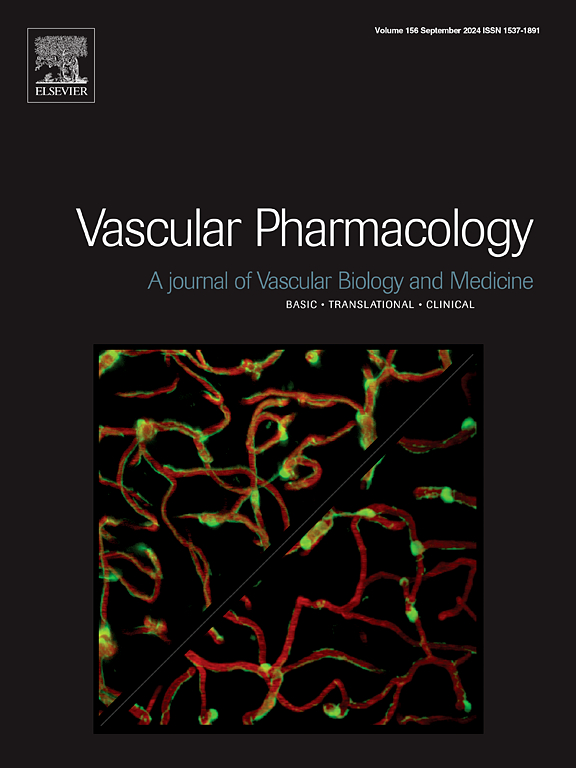Targeting Cis-regulatory elements for CRISPR-mediated transcriptional activation of the human MIR503HG locus
IF 3.5
3区 医学
Q2 PHARMACOLOGY & PHARMACY
引用次数: 0
Abstract
Advances in genome annotation have revealed a striking increase in the number and complexity of non-coding RNA (ncRNA) genes, particularly multi-transcript loci that harbor long non-coding RNAs (lncRNAs) and microRNAs (miRNAs) within the same genomic region. These loci can often function as coordinated regulatory units, with their transcription modulated by shared cis-acting regulatory elements (CREs). Traditional gene manipulation approaches, which typically target individual transcripts, are insufficient to capture the full regulatory and therapeutic potential of these complex loci. Here, we present “cis-ON” a single-vector lentiviral delivery system based on CRISPR activation (CRISPRa), designed to simultaneously upregulate multiple noncoding RNA transcripts by targeting a single CRE.
We focused on the evolutionarily conserved MIR503HG locus, which encodes seven lncRNA isoforms and hosts the miR-424/503 cluster, both implicated in various cellular processes, including proliferation, angiogenesis, and endothelial-to-mesenchymal transition. Using integrative analysis of histone marks (H3K27Ac, H3K4Me3), DNase hypersensitivity, and CAGE-seq data, we identified the primary promoter of the MIR503HG locus. A dual fluorescent reporter screen selected optimal single guide RNAs (sgRNAs) for targeting this region. We then engineered cis-ON, a novel lentiviral system combining dCas9-VPR and sgRNA to enable a streamlined single-vector delivery approach. Transduction of primary human endothelial cells with this system robustly activated the entire locus including the MIR503HG isoforms and co-embedded miRNAs miR-424 and miR-503, demonstrating coordinated transcriptional regulation. Additionally, the neighboring LINC00629 lncRNA locus remained unaffected, highlighting regulatory specificity.
This approach demonstrates the feasibility of modulating complex ncRNA loci across a ∼ 10 kb genomic region by targeting a single CRE, bypassing limitations of transcriptspecific strategies. By enabling simultaneous upregulation of lncRNAs and miRNAs, the cis-ON platform provides a streamlined strategy for restoring regulatory networks disrupted in disease.
靶向crispr介导的人类MIR503HG位点转录激活的顺式调控元件
基因组注释的进步揭示了非编码RNA (ncRNA)基因的数量和复杂性的显著增加,特别是在同一基因组区域内含有长非编码RNA (lncrna)和microrna (mirna)的多转录位点。这些基因座通常可以作为协调的调控单元,它们的转录由共享的顺式作用调控元件(CREs)调节。传统的基因操作方法通常针对单个转录本,不足以捕捉这些复杂基因座的全部调控和治疗潜力。在这里,我们提出了一种基于CRISPR激活(CRISPRa)的单载体慢病毒传递系统“cis-ON”,旨在通过靶向单个CRE同时上调多个非编码RNA转录物。我们重点研究了进化上保守的MIR503HG位点,该位点编码7种lncRNA亚型,并承载miR-424/503簇,两者都涉及各种细胞过程,包括增殖、血管生成和内皮到间质转化。通过对组蛋白标记(H3K27Ac、H3K4Me3)、dna酶超敏反应和CAGE-seq数据的综合分析,我们确定了MIR503HG位点的主要启动子。双荧光报告筛选选择了针对该区域的最佳单向导rna (sgrna)。然后,我们设计了cis-ON,一种结合dCas9-VPR和sgRNA的新型慢病毒系统,以实现流线型的单载体递送方法。用该系统转导原代人内皮细胞,稳健地激活了整个基因座,包括MIR503HG亚型和共嵌入的miRNAs miR-424和miR-503,显示出协调的转录调节。此外,邻近的LINC00629 lncRNA位点不受影响,突出了调控特异性。该方法证明了通过靶向单个CRE来调节横跨 ~ 10 kb基因组区域的复杂ncRNA位点的可行性,绕过了转录特异性策略的限制。通过同时上调lncrna和mirna, cis-ON平台为恢复疾病中中断的调控网络提供了一种简化的策略。
本文章由计算机程序翻译,如有差异,请以英文原文为准。
求助全文
约1分钟内获得全文
求助全文
来源期刊

Vascular pharmacology
医学-药学
CiteScore
6.60
自引率
2.50%
发文量
153
审稿时长
31 days
期刊介绍:
Vascular Pharmacology publishes papers, which contains results of all aspects of biology and pharmacology of the vascular system.
Papers are encouraged in basic, translational and clinical aspects of Vascular Biology and Pharmacology, utilizing approaches ranging from molecular biology to integrative physiology. All papers are in English.
The Journal publishes review articles which include vascular aspects of thrombosis, inflammation, cell signalling, atherosclerosis, and lipid metabolism.
 求助内容:
求助内容: 应助结果提醒方式:
应助结果提醒方式:


